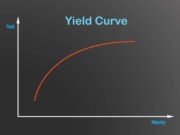What is ‘Random Factor Analysis’
A statistical analysis performed to determine the origin of random data figures collected. Random factor analysis is used to decipher whether the outlying data is caused by an underlying trend or just simply random occurring events and attempts to explain the apparently random data. It uses multiple variables to more accurately interpret the data.
Explaining ‘Random Factor Analysis’
This data is used to help companies better focus their plans on the actual problem. If the random data is caused by an underlying trend or random norecurring event, that trend will need to be addressed and remedied accordingly. For example, consider a random event such as a volcano eruption. Sales of breathing masks may skyrocket, and if someone was just looking at the sales data over a multi-year period this would look like an outlier, but analysis would attribute this data to this random event.
Further Reading
- Random matrix theory and financial correlations – www.worldscientific.com [PDF]
- Generating composite volatility forecasts with random factor betas – www.sciencedirect.com [PDF]
- Attitudes to money in a random sample of adults: Factor analysis of the MAS and MBBS scales, and correlations with demographic variables – www.sciencedirect.com [PDF]
- Experiments with more than one random factor: Designs, analytic models, and statistical power – www.annualreviews.org [PDF]
- Analysis of means approach for random factor analysis – www.tandfonline.com [PDF]
- Exploratory factor analysis with small sample sizes – www.tandfonline.com [PDF]
- Entrepreneurs in Turkey: A factor analysis of motivations, success factors, and problems – www.tandfonline.com [PDF]
- The three types of factor models: A comparison of their explanatory power – www.tandfonline.com [PDF]
- Exploratory structural equation modeling: An integration of the best features of exploratory and confirmatory factor analysis – www.annualreviews.org [PDF]


































